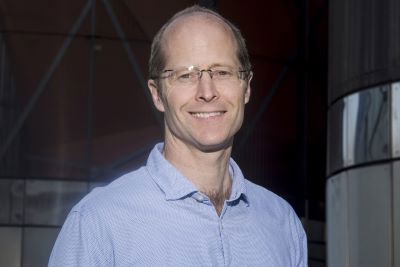The UK has set a target to operate a zero-carbon electricity system by 2035, requiring a complete transformation in how we generate, distribute and use electricity in a little over a decade.
As we accelerate the decarbonisation of transport and heat, one of the biggest challenges will be getting the right amount of power to the right places at the right time. Electric vehicle (EV) charging infrastructure in particular will require multi-megawatt capacity at key locations (one rapid charger can require the same amount of power as a large supermarket) - whether a bus depot with hundreds of buses to charge overnight, a motorway service station with drivers impatient to charge and be on their way, or an HGV refuelling centre helping to keep goods moving 24/7.
National Grid’s transmission network will be critical to this transition, providing access to large volumes of power at strategic locations nationwide, while alleviating pressure on the local distribution network.
The electric motorway
The transmission network is the electricity equivalent of the motorway network, carrying large amounts of high voltage electricity around Great Britain. The distribution network is like our smaller ‘B’ roads – delivering this electricity to businesses and homes at a lower voltage.
MORE FROM ENERGY & ENVIRONMENT
Historically, the transmission network has been the preserve of centralised fossil fuelled power stations generating electricity to power the nation. On the demand-side, only huge consumers of electricity, like giant steel factories, have warranted a direct connection.
However, as the UK moves towards net zero and the electrification of heat and transport accelerates, unlocking the transmission network can help meet our growing demand for power at lowest overall cost.
Energy Superhub Oxford
Working closely with National Grid, EDF Renewables UK launched Energy Superhub Oxford in 2022, a pioneering urban decarbonisation project and, uniquely, the first project in the UK to connect a grid-scale battery and EV charging network directly to the transmission network. The four-year project, delivered in partnership with Oxford City Council and backed by UKRI, is creating the low carbon infrastructure needed to help Oxford achieve net zero by 2040.
At the heart of the project is a 50MW hybrid battery energy storage system, combining a 50MW/50MW lithium-ion system with a 2MW/5MWh vanadium flow battery. The battery connects to the transmission network at Cowley substation, to the south east of the city, and is helping National Grid to store and manage renewable generation whilst balancing electricity supply and demand second-by-second.
Sharing this connection point is a private wire network, built to deliver large volumes of power to strategic EV charging locations in and around Oxford. The first of these opened in July 2022 and is Europe’s most powerful public EV charging hub. Located at Redbridge Park & Ride, approximately four miles from Cowley, it offers fast to ultra-rapid charging for 42 cars at once. But, with 12MW of installed capacity, it can scale to charge up to 400 simultaneously.
A substation has also been installed at Oxford Bus Company’s Watlington Road depot, and can provide up to 20MW of capacity, ready to support the company’s plans to introduce over 100 electric buses in the coming two years.
Energy Superhub Oxford is one of up to 40 Energy Superhubs EDF Renewables UK is developing around the country, delivering up to 2GW of battery storage and creating the charging infrastructure needed to support the estimated 36 million EVs that will be on UK roads by 2040.
Accelerating Net Zero
Britain’s electricity grid is already one of the greenest in the world, with record levels of renewable power connected and powering homes and businesses. However, delivering a net zero power system by 2035 will mean connecting more projects to the transmission network.
Energy Superhub Oxford is an innovative solution which serves multiple needs from one physical connection point. This new design is efficient and cost-effective, reduces the impact on the local network in the area and forms part of wider reforms to speed up grid connections.
Unlocking connections to the transmission network can act as a catalyst for the decarbonisation of society. High voltage power can help electrify transport or heating, as well as deliver battery storage which helps manage peaks and troughs in demand for electricity – making the electricity system more efficient and keeping costs down for consumers.

Matthew Boulton, Director of Storage and Private Wire at EDF Renewables UK











Water Sector Talent Exodus Could Cripple The Sector
One major problem OFWAT highlights which OFWAT created is the AMPs. Normally businesses have a pipeline of projects which the most value for money...